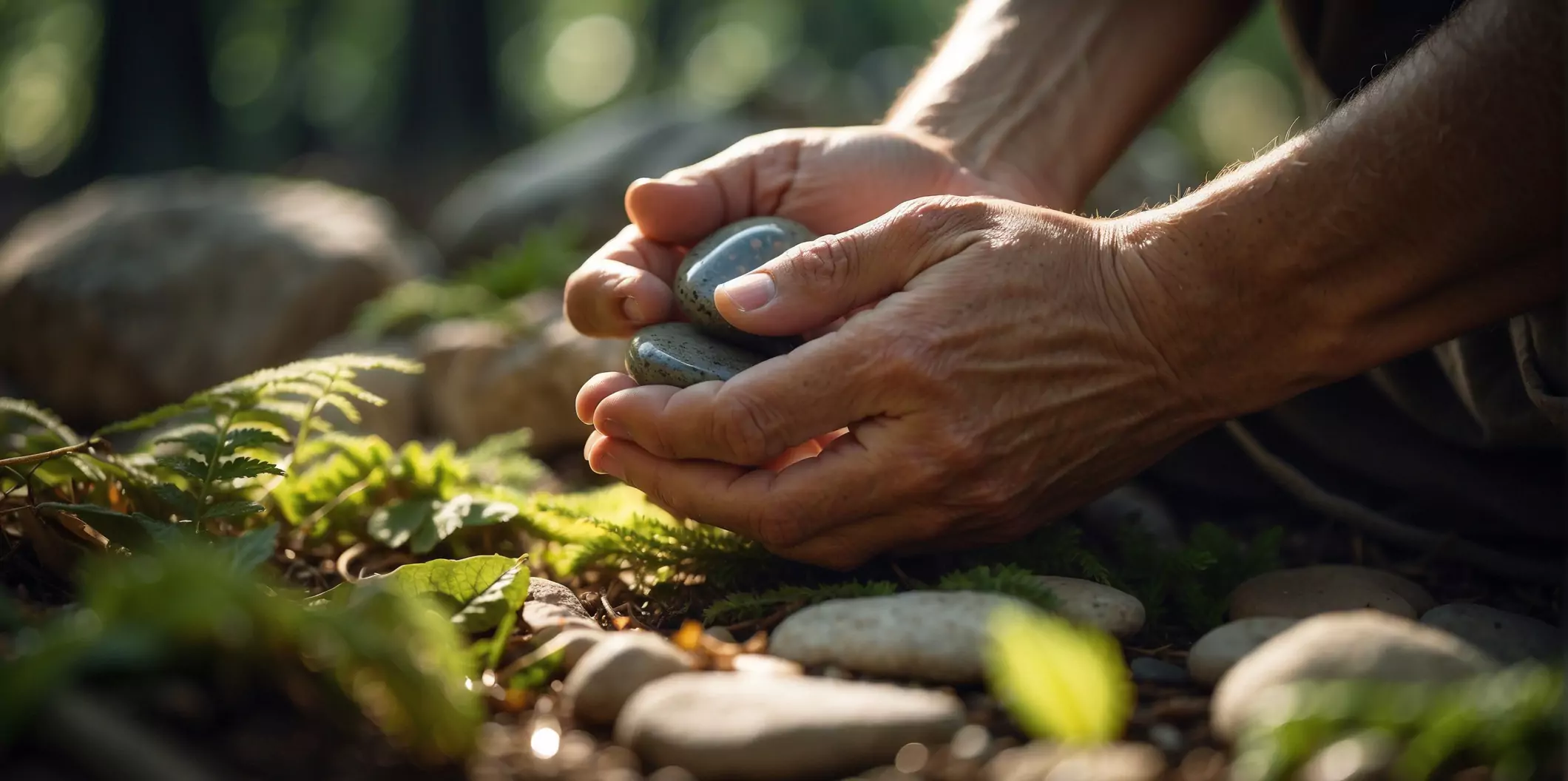Did you know that nearly 40% of adults in the US have tried alternative healing methods for various health concerns? From acupuncture to herbal remedies, unconventional therapies are gaining popularity.
Alternative healing methods refer to non-traditional approaches to health and wellness, such as acupuncture, herbal medicine, Reiki, and meditation. These therapies aim to treat the whole person, addressing physical, emotional, and spiritual aspects for holistic healing.
Come along and explore the wonders of alternative healing, whether you’re interested in holistic approaches or looking for natural solutions.
Understanding Complementary vs Alternative Therapies
Complementary Therapies
Complementary therapies are used alongside conventional medical treatments. They aim to enhance the overall well-being of individuals undergoing traditional medical care. These therapies can include practices like acupuncture, massage therapy, or yoga.
The benefits of complementary therapies include reduced stress levels, improved pain management, and enhanced relaxation. However, they should not replace standard medical treatments but rather work in conjunction with them.
Alternative Therapies
Alternative therapies, on the other hand, are used instead of conventional medical treatments. These methods may include herbal supplements, homeopathy, or energy healing techniques. People often turn to alternative therapies when seeking a more holistic approach to their health.
While some individuals find success with alternative therapies, it’s essential to note that these methods may not have scientific backing or regulatory approval. It’s crucial to consult healthcare providers before trying any alternative healing methods to ensure they are safe and compatible with existing treatments.
Exploring Different Alternative Healing Methods
Acupuncture
Acupuncture, a religious healing practice originating from ancient China, involves inserting thin needles into specific points on the body. This medical system aims to restore the body’s balance and promote natural healing processes. Studies have shown its effectiveness in treating various illnesses such as chronic pain, migraines, and even mental health conditions like anxiety.
Aromatherapy
Aromatherapy utilizes different types of essential oils extracted from plants to improve physical and psychological well-being. This alternative healing method is based on the idea that inhaling these aromatic compounds can stimulate brain function and alleviate symptoms of various ailments. It is commonly used to reduce stress, improve sleep quality, and boost mood.
Chiropractic Care
Chiropractic care focuses on diagnosing and treating musculoskeletal disorders through manual adjustments of the spine. This way of healing emphasizes the relationship between the spine and overall health. It is known to be effective in managing conditions such as back pain, neck pain, and headaches.
Examples of Conditions Treated:
Acupuncture: Chronic pain, migraines, anxiety
Aromatherapy: Stress, sleep issues, mood disorders
Chiropractic Care: Back pain, neck pain, headaches
The Role of Herbal and Plant-Based Remedies
Traditional Practices
Many cultures have a long history of utilizing herbal remedies and plant-based substances for healing. In ancient times, these natural remedies were the primary way to address health problems.
Effectiveness in Treating Ailments
Herbal remedies like chamomile and peppermint have been known for their calming effects on the body, aiding in relaxation and promoting better sleep. Essential oils extracted from plants like lavender are used to alleviate headaches and reduce stress levels.
Understanding Side Effects
While herbs and plants offer a natural approach to healing, it’s crucial to acknowledge that they can also cause adverse reactions or interact with medications. For instance, St. John’s Wort, often used to treat depression, can interfere with certain drugs like birth control pills.
Energy Healing Practices for Well-being
Reiki Therapy
Reiki, a Japanese energy therapy, involves the transfer of universal energy through the palms to promote healing. Practitioners believe that this energy can address physical, emotional, and mental imbalances.
Qi Gong Practice
Qi Gong is a Chinese practice that combines gentle movements with breathing techniques to enhance the flow of energy in the body. This ancient art aims to improve overall well-being by harmonizing mind, body, and spirit.
Crystal Healing
Crystal healing utilizes various crystals and gemstones to balance energy fields and promote healing. Each crystal is believed to have unique properties that can address specific conditions or imbalances within the body.
Energy therapies like Reiki, Qi Gong, and crystal healing focus on tapping into the body’s natural ability to heal itself by restoring balance to its energy centers. By addressing blockages or disruptions in the flow of energy, these practices aim to alleviate symptoms of various conditions and support overall well-being.
Balancing the body’s energy centers through these practices can help individuals combat issues such as low mood and stress.
Many people turn to energy healing when traditional medicine falls short of addressing their needs.
Mind-Body Techniques for Holistic Health
Meditation
Meditation involves focusing the mind and eliminating the stream of jumbled thoughts that may be crowding our minds. This practice can help reduce stress, promote relaxation, and enhance self-awareness.
Yoga
Yoga combines physical postures, breathing exercises, and meditation to improve mental and physical health. Through regular yoga practice, individuals can increase flexibility, build strength, and cultivate a sense of inner peace.
Mindfulness Practices
Mindfulness encourages individuals to stay present in the moment without judgment. By cultivating awareness of our thoughts and feelings, mindfulness practices can help manage anxiety, alleviate symptoms of depression, and enhance overall well-being.
Physical Therapies in Alternative Medicine
Massage Therapy
Massage therapy plays a crucial role in alternative medicine by relieving pain and promoting relaxation. This hands-on technique involves manipulating the body’s soft tissues to improve circulation and reduce muscle tension. It is commonly used to alleviate chronic pain conditions such as back pain.
Osteopathy
Osteopathy is another essential physical therapy that focuses on the musculoskeletal system’s health. By using manual techniques, osteopaths aim to enhance the body’s natural healing processes and restore balance. This therapy is beneficial for treating various conditions, including back pain and joint issues.
Hydrotherapy
In alternative medicine, hydrotherapy utilizes water for therapeutic purposes. Whether through hot baths, jacuzzis, or underwater exercises, hydrotherapy helps reduce pain, improve flexibility, and enhance overall well-being. It is often recommended for individuals with chronic pain conditions like arthritis.
Nutritional Supplements and Their Healing Effects
Immune Support
Nutritional supplements play a vital role in supporting overall health by boosting the immune system. Certain supplements like vitamin C, zinc, and echinacea are known for their immune-boosting properties.
Joint Health
For individuals struggling with joint pain or arthritis, supplements such as glucosamine and chondroitin sulfate can help reduce inflammation and improve joint mobility. These supplements are widely used to support joint health.
Cognitive Function
Supplements like omega-3 fatty acids, specifically DHA, have shown significant benefits in enhancing cognitive function. They promote brain health and help prevent cognitive decline associated with aging.
When considering nutritional supplements, it is crucial to be aware of potential side effects. While most supplements are safe when taken at recommended dosages, some may have significant side effects if consumed excessively. Always consult a healthcare provider before starting any new supplement regimen to avoid any potential harm or injury.
Closing Thoughts
You’ve delved into the world of alternative healing methods, discovering a plethora of options that can complement traditional medicine. From herbal remedies to energy healing practices, you’ve explored diverse avenues for enhancing your well-being. Remember, incorporating these practices into your routine can offer a holistic approach to health, nurturing your mind, body, and spirit.
As you continue on your wellness journey, don’t hesitate to experiment with different modalities and find what resonates best with you. Embrace the power of alternative healing methods as valuable tools in your self-care arsenal. By taking proactive steps to prioritize your health and explore these alternative avenues, you’re investing in a balanced and harmonious life. Your well-being is worth every effort you put into it!
Frequently Asked Questions
What is the difference between complementary and alternative therapies?
Complementary therapies are used alongside conventional medicine, while alternative therapies are used instead of traditional treatments. Both aim to enhance well-being but approach it differently.
How do energy healing practices contribute to well-being?
Energy healing practices work on the principle of balancing the body’s energy flow to promote healing and relaxation. By addressing energy blockages, these methods can support overall well-being and emotional balance.
Are nutritional supplements effective in alternative healing methods?
Nutritional supplements can play a supportive role in alternative healing by providing essential nutrients that may be lacking in one’s diet. They can help address specific health concerns and contribute to overall wellness when used appropriately.
Why are mind-body techniques important for holistic health?
Mind-body techniques like meditation and yoga help connect the mental and physical aspects of health, promoting harmony within the body. By reducing stress and improving mental clarity, these practices support holistic well-being.
How can physical therapies benefit individuals seeking alternative medicine?
Physical therapies such as acupuncture or chiropractic care focus on manipulating the body’s structure to alleviate pain and improve function. These hands-on approaches can complement other alternative healing methods for a comprehensive approach to health.











